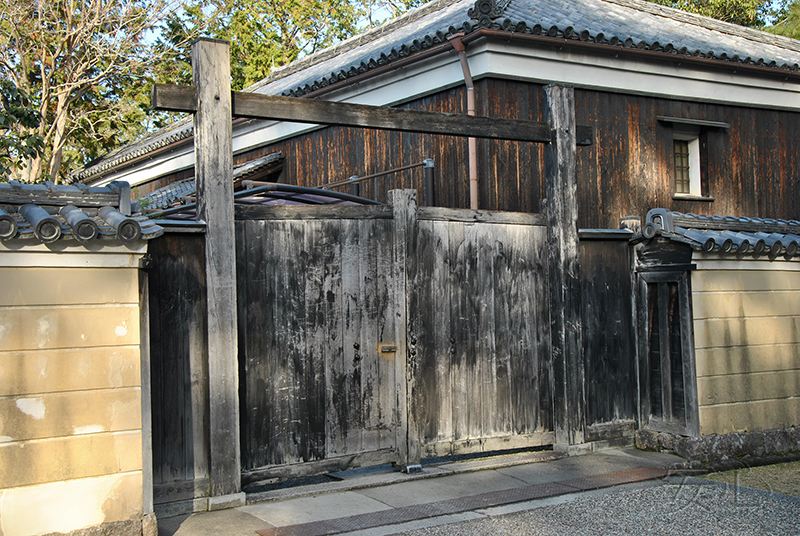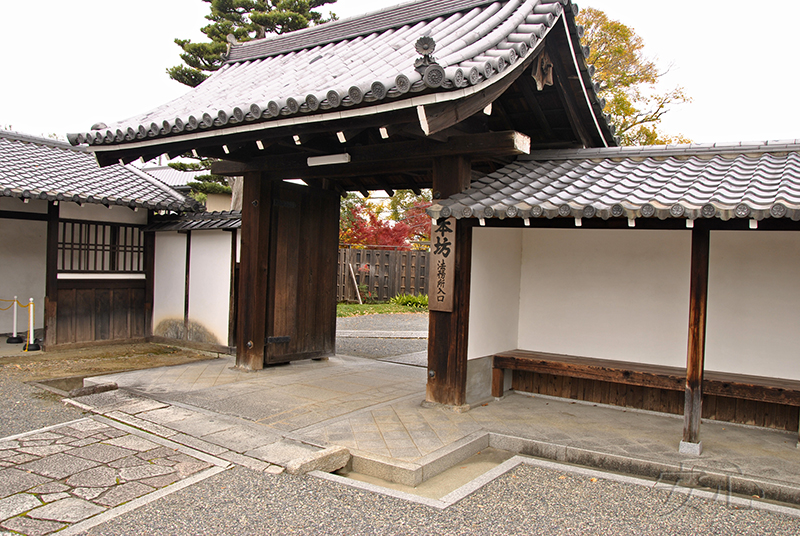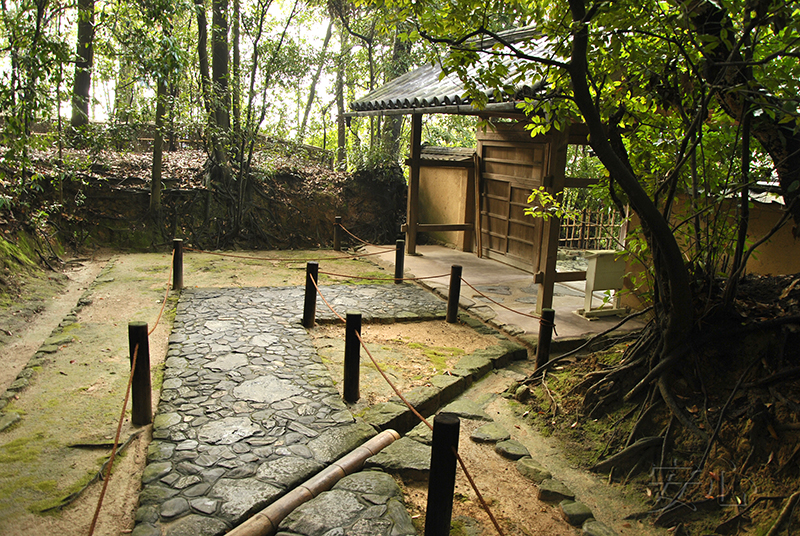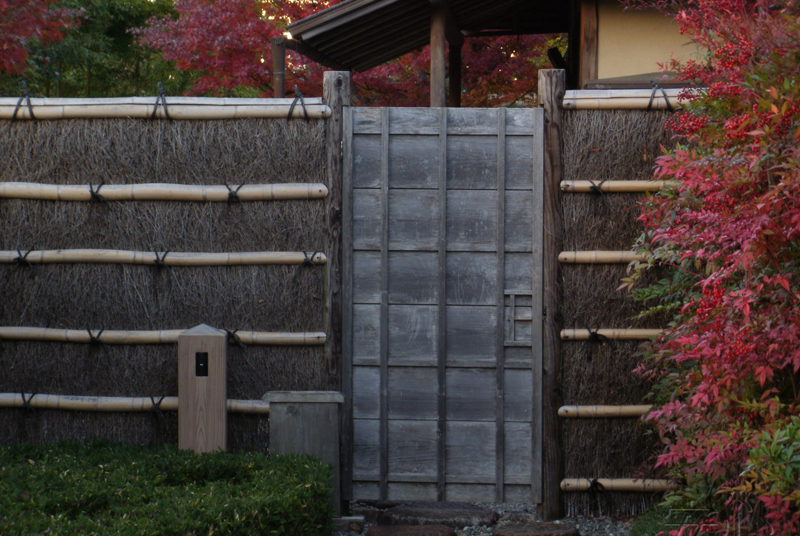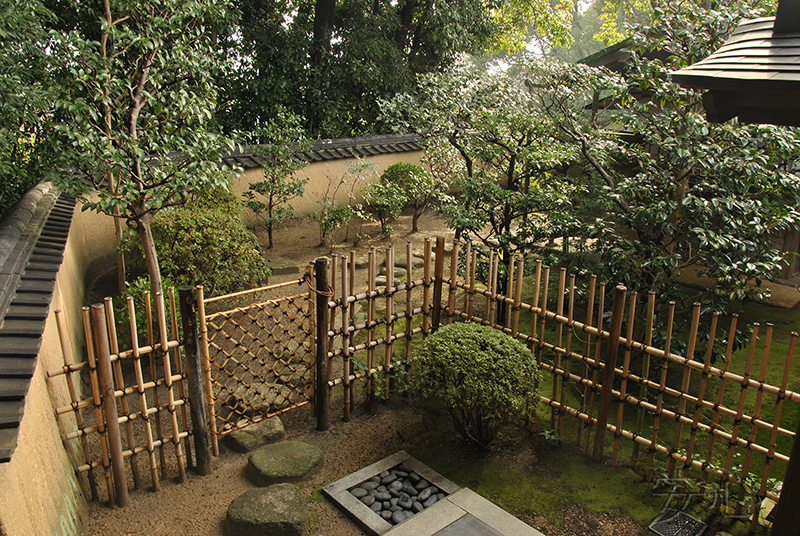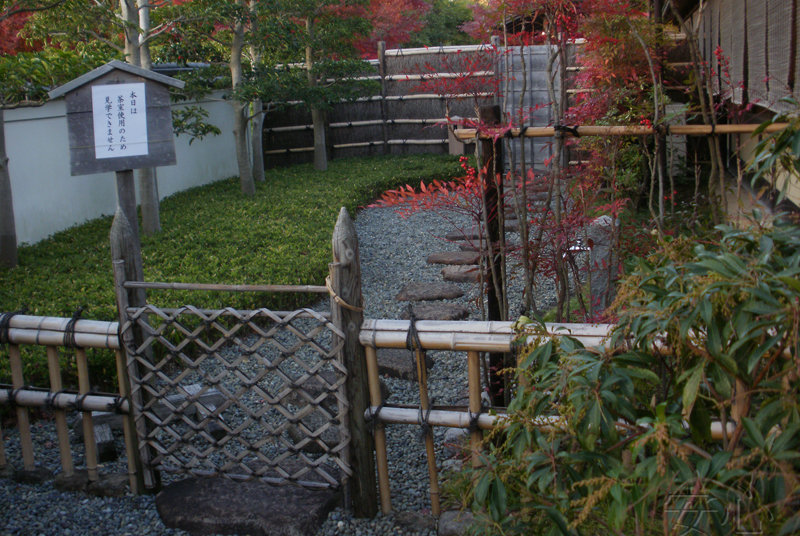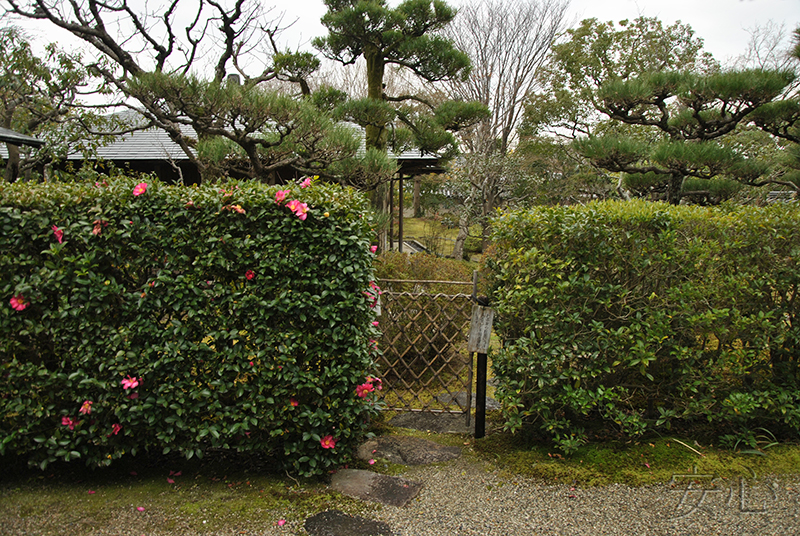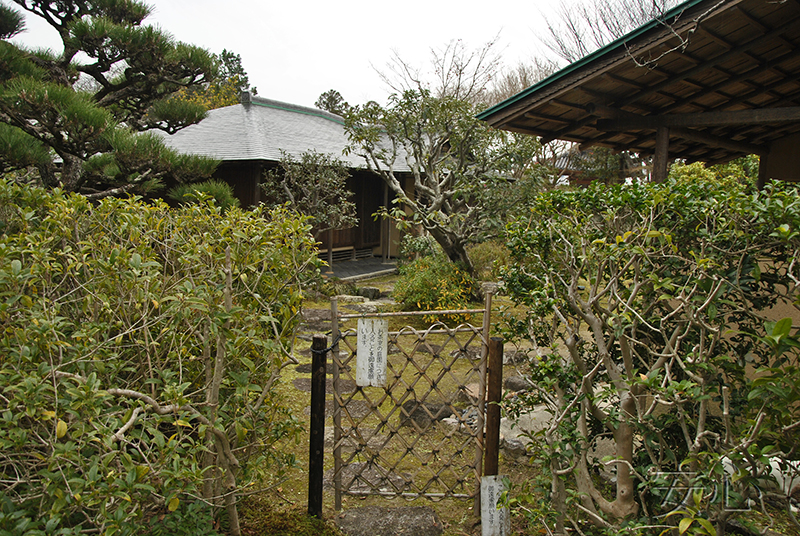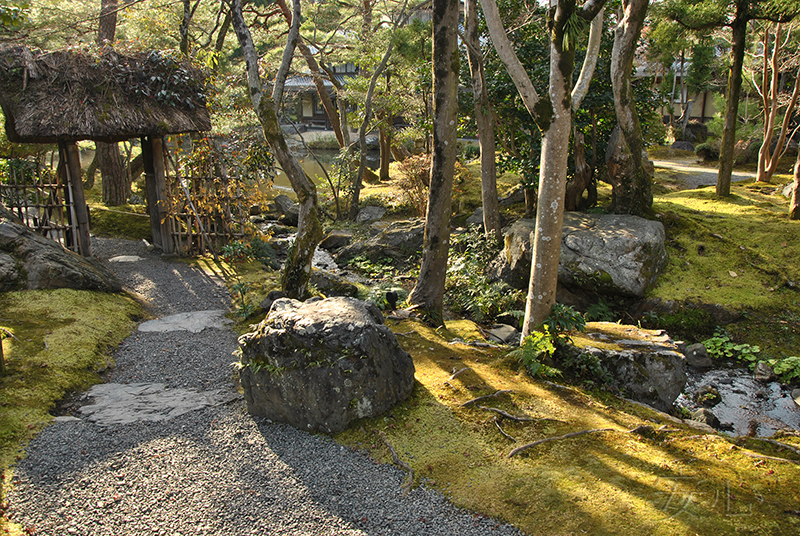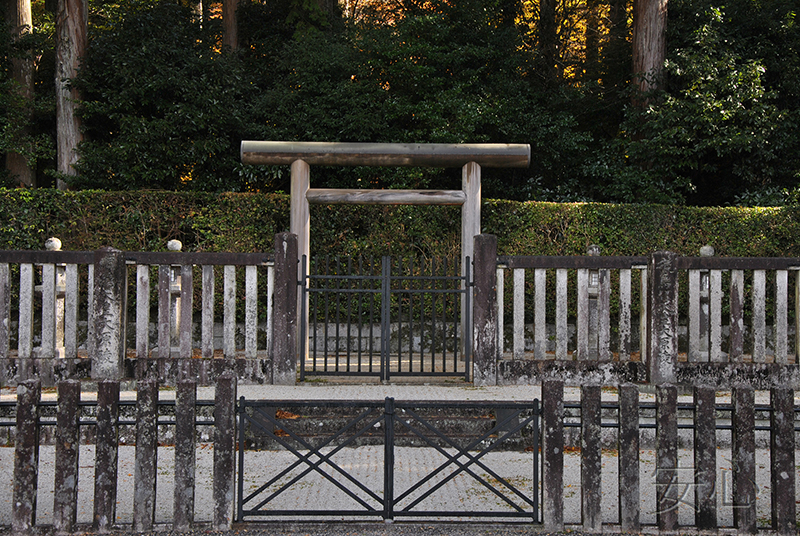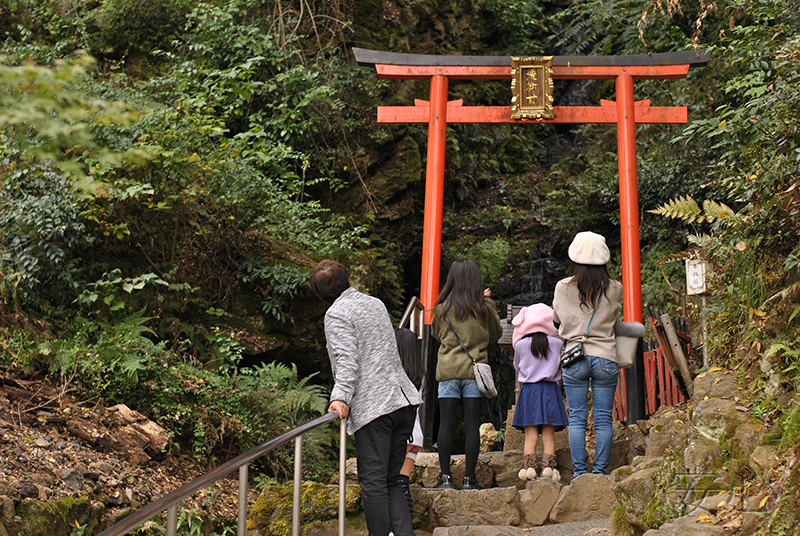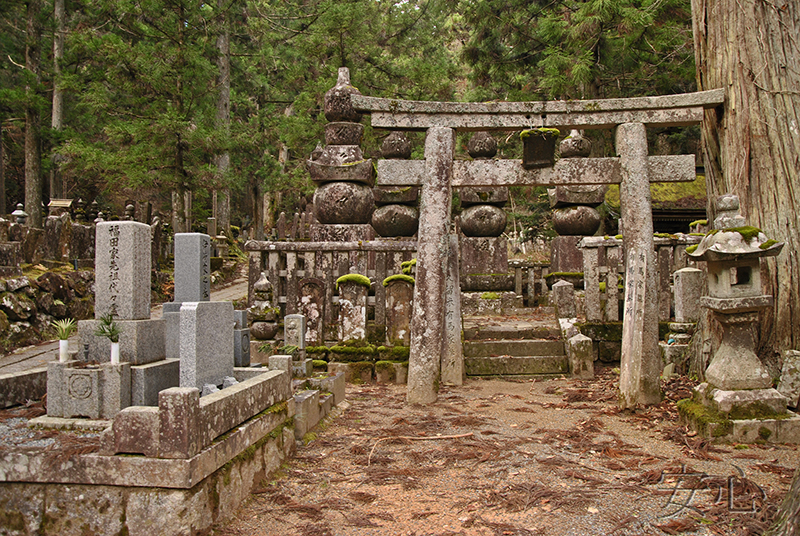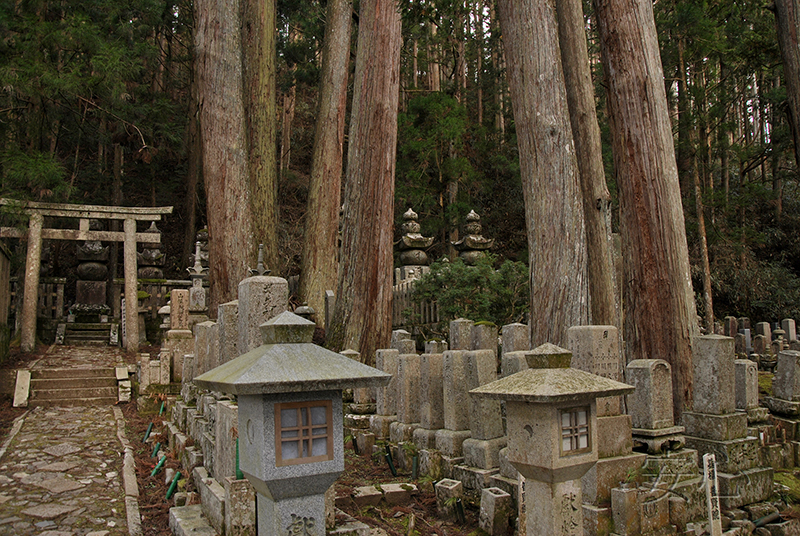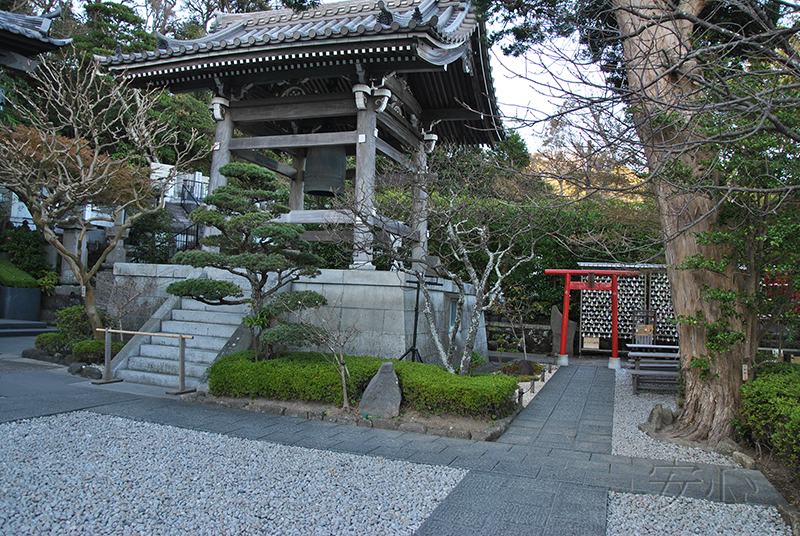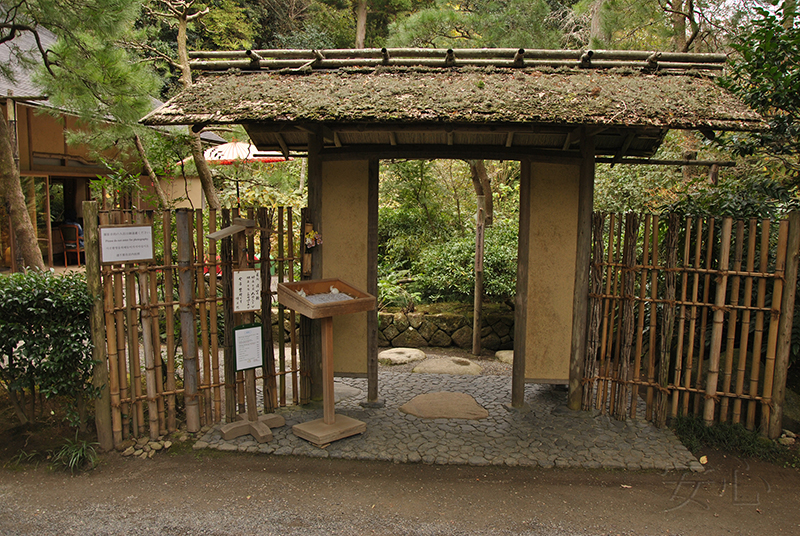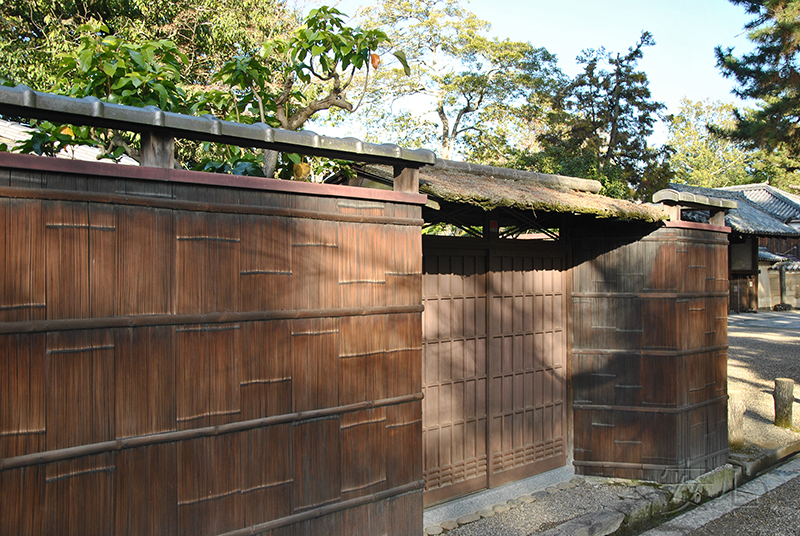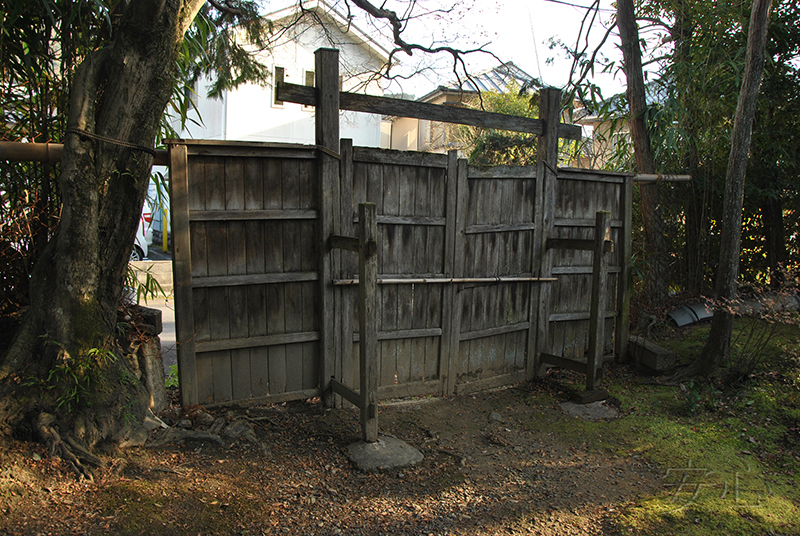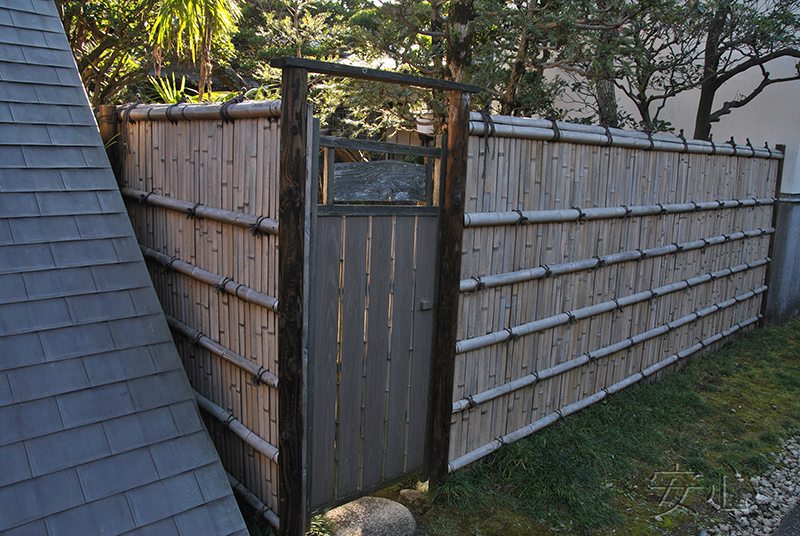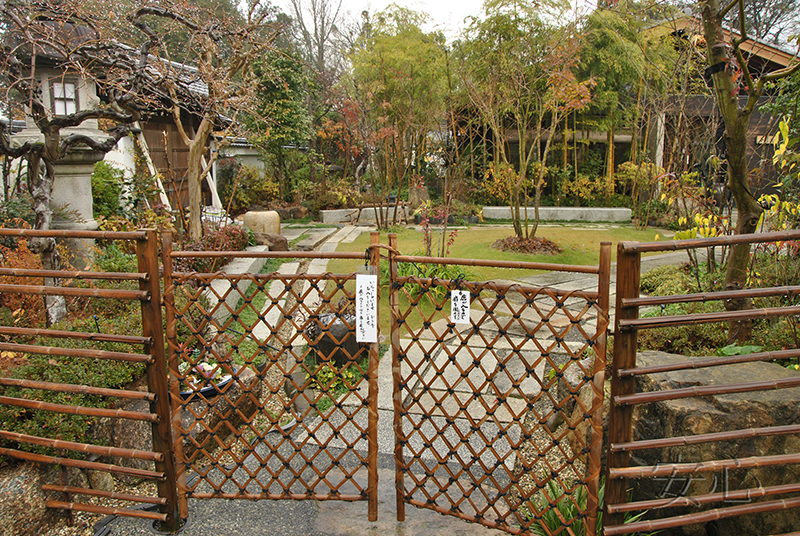
Gates and garden gates in Japanese gardens
In ancient times gates in Japan were an indicator of personТs well-being. Noble people could have them built only. But beginning with the 19th century this garden component became allowable for common people. At that time the gates consisted of two posts with a crossbeam.
Gate, Nara
Later, influenced by Chinese culture, a roof above the gates appeared. In the temple complexes, by analogy with the Chinese ones, usually two gates were built. At the entrance there were the massive Somon gates. And then, on the way to the main temple, there were the most important Sammon gates.
Entrance to the Chishaku-in Temple, Kyoto
Also, two massive gates can be seen in the residences of rich and influential people, such as former samurai retired from business, famous poets, tea masters, priests. The passage between the first and second gates was an important component of preparing the visitor for certain rituals and of the perception of the garden as a whole.
Entrance to Jiko-in Garden, Yamatokoriyama
However, such gates are not always appropriate in small private gardens. Agree, a massive gate with a heavy roof will fit well into the fortress wall surrounding the feudal lord's castle, but not into a small Japanese garden.
Gate, Nijo Castle, Kyoto
We'd better pay attention to the gates and wickets used in tea gardens. These gardens appeared in the 16th century. The gates have a particular meaning. When the guests, invited to a tea ceremony, come up to the house they can see the doors which are either slightly open or opened wide. It symbolizes the host’s willingness to welcome his guests. As soon as the guests come through the gates into an outer tea garden soto-roji, they close the door. It lets the host understand that all the guests have gathered. Besides the very minute after the guests come into the garden, they stop belonging to the outer world and get ready for peace and spirituality. After that all the participants sit still in a small summer-house looking forward to the beginning of a tea ceremony. Soon the master approaches the inner gates, unlock them and silently invite their guests to the inner tea garden uti- roji.
Meimei-an teahouse, Matsue
Momjiyama garden, Shidzuoka
In tea gardens there are two kinds of gates: outer gates (sotomon) and inner ones (tyumon). Both should suit your garden. So, tall tyumon with a roof looks absurd in a small garden while it will definitely make your place more beautiful if built in a bigger garden.
Entrance to Seisyu-an Tea Garden, Nara
A simple wicket gate, made of bamboo or wooden laths, is often used for inner gates.
Jiko-in garden, Jamatokoriyama
Nezu museum garden, Tokyo
Momjiyama garden, Shidzuoka
The role of a fence can be played by a hedge.
Hokke-ji Temple Garden, Nara
There even can be a wicket gate without any fence (this variant would be more suitable for a small place made in Japanese style). Of course, it is more symbolic than functional.
Entrance to the tea restaurant at Nijo Castle, Kyoto
One of the gates in Japanese gardens is soji-gutti. It’s usually located in the far corner of the garden and built for tidying up.
Hokke-ji Temple Garden, Nara
Wickets and gates can be not only in small tea gardens, but also in large ones. Such gardens appeared in Japan during Edo era (1600-1868). They looked like a number of pictures created for reminding people of some special events. So, those could be the scenes of famous myths or historical events and even tiny copies of famous gardens. A ravine, a hill or shrubberies could be used as a pass from one part of the garden to another. If you want to make such a tea garden, you can’t do without gates.
The garden of Hashimoto Kansetsuу, Kyoto
There is one more type of gates called torii. They are one of the most famous symbols of Japan. Initially they looked quite simple: two wooden posts and two laths, the wood wasn’t even painted. Sometimes such gates can be seen today.
Sanzen-in Temple, Ohara
Later, under the influence of China torii became what they are now. Wood was replaced by stone, metal or concrete, all the construction was painted red and decorated with small patterns and hieroglyphs.
Shinto Shrine Matsuno Taisha, Kyoto
No doubt these gates are really beautiful. ‘Floating torii’ of Itsukushima sanctuary are especially impressive as they placed just in water. When the tide is out you can walk there, when the tide comes in, they are reflected in water as in the giant mirror. The Japanese say that the sun goes into the torii.
In spite of their beauty, don’t put these gates in your garden. The fact is these gates carry out a ritual message. In most cases they are put at the entrance to the Shintoistic sanctuary and symbolize the border between the worlds of people and spirits. It is believed that going through torii helps in purification.
Engakuji Temple, Kamakura
Shinto Shrine Matsuno Taisha, Kyoto
Once there was a law in Japan according to which the torii could be placed only near state temples and several sanctuaries. Even when the ban was removed, those gates weren’t put in any other places. You can come across the whole arcades of torii situated very close to each other. In Fushimi temple in Kyoto the red gates, which are next to each other, make a long corridor which is unbelievably beautiful in the sun rays.
Fushimi Inari Shrine, Kyoto
Torii can often be seen in front of the cemetery or in the cemetery itself.
Cemetery on the sacred mountain Koya-san
Or they can stand on the territory of the temple on the road leading to the burial places of priests.
Hasedera Temple, Kamakura
Taking into account all the information, you should think twice before you decide to put these gates in your garden. After all, our garden is not a temple, and certainly not a cemetery. Better to choose something more suitable. And you don't have to be exclusively attached to tea gardens. In Japan, you can see a lot of modern options for gates, both in private gardens and in small cafes and restaurants.
Meigetsu-in Temple Garden, Kamakura
Gate, Nara
The garden of Hashimoto Kansetsuу, Kyoto
Yamamoto-tei garden, Tokyo
Wicket in a private garden, Nara
anshin©2011All rights reserved. When using the materials of the site, reference is obligatory.
Proposals for co-operation, as well as comments and suggestions on the site please send to the address: anshinsad@gmail.comtel: +7 (965) 121-80-60, 10am-20pm
